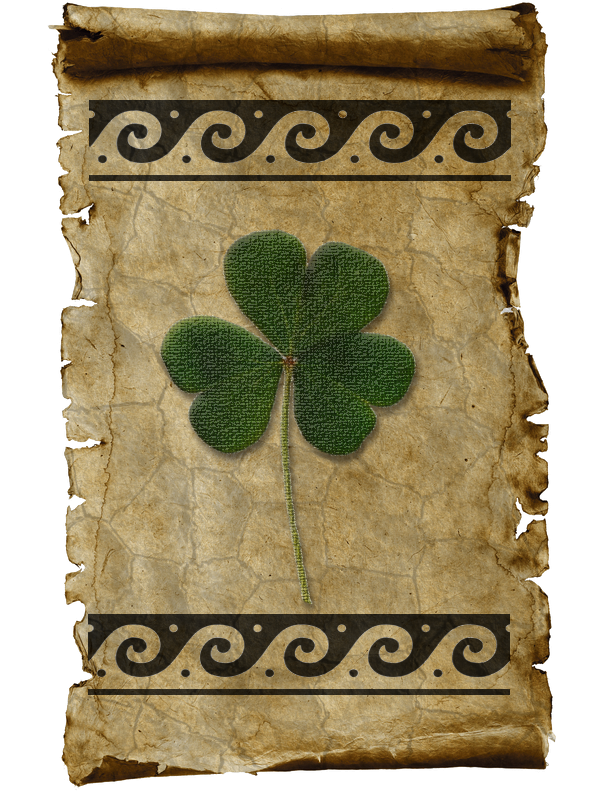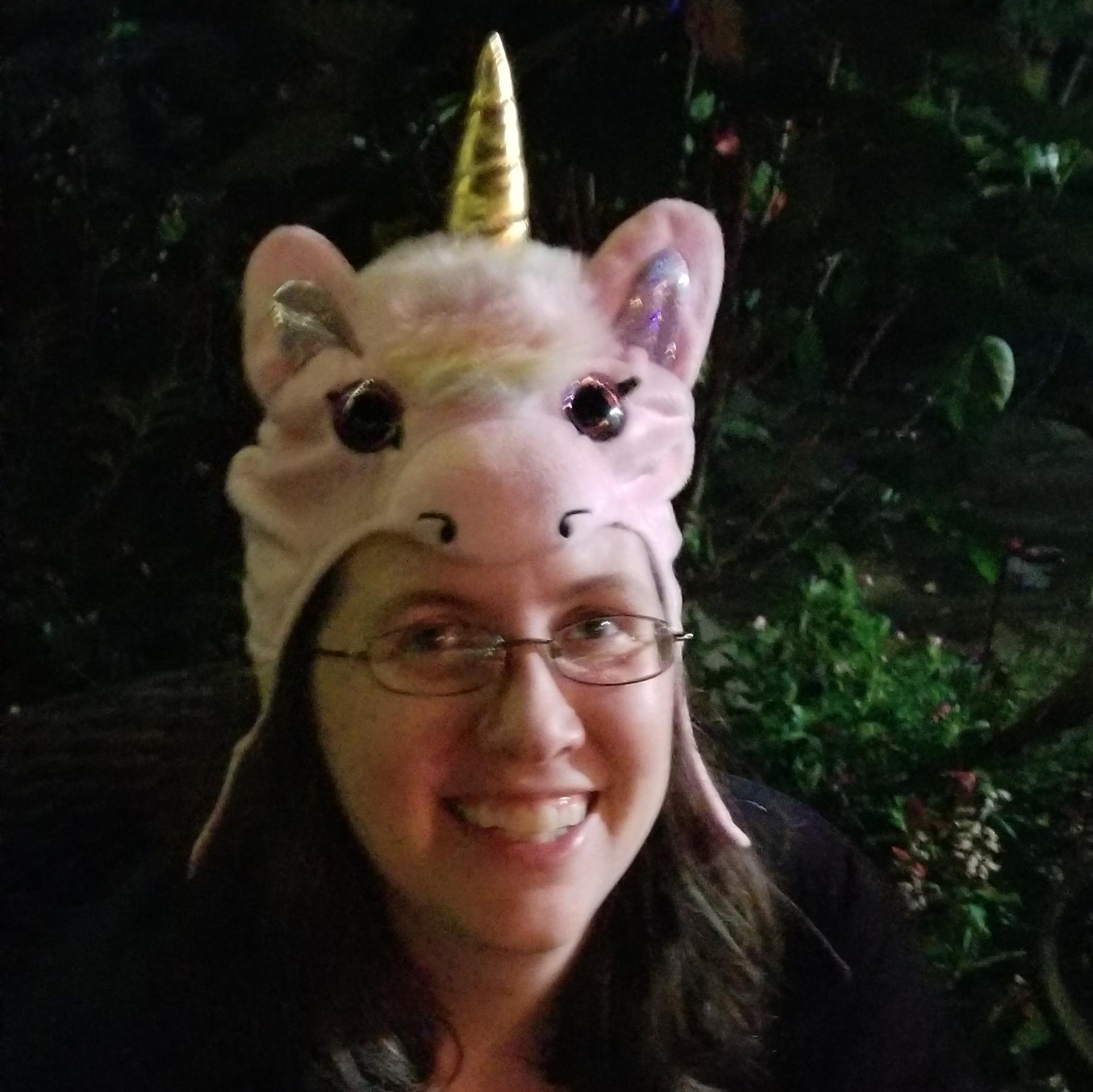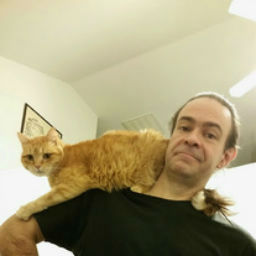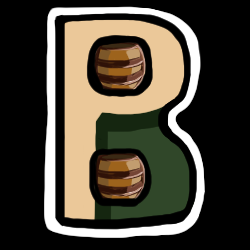Seskyalii
The Seskyalii ( pronounced "Sess-caye-lee" ) is one of the older cultures on the continent of Edoya. Earliest records indicate that settlements of the Seskyalii, inhabited primarily by members of the medusa species, dotted the jungles of Southern Edoya as far back as the Magi Wars before the Thasilan Empire. Originally an agrarian jungle people, they were one of the first cultures to develop ‘living settlements’ where individual dwellings were made from living saplings bent and shaped to support homes and community buildings in their jungle home.
Due to the aggressive expansion of the Gauian Empire, over time the Seskyalii were forced to relocate to Northern Edoya. In the north, the Seskyalii helped found the kingdom of Topan, nestled in a stretch of land between current day KaraKorum and Copan Shire.
Seskyalii tend to follow generations old common cultural ideals and beliefs. They are, at their heart, a people of integrity, friendship, and balance. Three long held pillars of philosophy to their beliefs. However, this at times will give the impression that the Seskyalii are lazy in their dealings with the world. Given their hard history, this is far from true.
Folk tales and legends have left the Seskyalii with the social stigma of being considered heartless monsters, driven to torment their victims before eventually turning them to stone or worse.
However, the folk tales are misleading and obscure the deeper and more complicated truth.
Society
The moon’s eye is wide, stars so high
The hunters stalk the night.
They come for tooth and scale and all,
To steal our children oh so bright.
But sleep my little one so sweet,
For you they will not find.
Daughter stands watch by the gate, her sickle in her hand.
Sister watches field and farm, traps lay across the land.
Mother guards hearth and home, black arrow primed to fire.
For this night no hunter will find you,
Bright dragon’s child you are.
The hunter’s greed for scale and tooth,
Stay frozen in the stone.
Sleep, sweet one, let dreams take you,
To dreams bright with joy.
Feel the sun on scale and hair,
As tomorrow’s hope you are.
Folk tales and legends surround the Seskyalii. Many, though not all, center around the Seskyalii being monstrous creatures that kill most interlopers on sight. Those that aren’t turned to stone or killed suffer a bloody death. However, the Seskyalii are a quiet, primarily agrarian folk who take pains to live in harmony with nature. This translates to the Seskyalii having a natural gift when dealing with animals, such as snakes and reptiles, along with having a deep herbal tradition to medicines. In general their communities are peaceful and friendly, though they may seem a little guarded when it comes to newcomers until they feel they can be trusted.
Tales of the blood-thirsty, horrific tales of the Seskyalii, specifically those of medusa ancestry, stem from the Seskyalii draconic ancestry. Seskyalii histories trace their origins back to ancient dragons who so loved the quiet places, such as the forests, jungles, rivers - that they gave up their ability to fly so they could live among this beauty. The strange nature of these ancient ‘jungle dragons’ with their herbal medicines were welcomed at first.
Later, jealousy grew over how easily these Seskyalii could work with nature and plants. Jealousy gave way to suspicion and then superstition, especially over the affinity that the Seskyalii have with reptiles. This was further aggravated by wizards eager to use the Seskyalii draconic ancestors as spell components.
To defend themselves, the ancient Seskyalii used their herbal skills to protect themselves by paralyzing attackers. Over time, many of the Seskyalii, such as those with medusa ancestry, even learned to turn an attacker to stone. They could also reverse the process as well.
Family and the Rule of Three
Three sisters of old were there,
Root and branch of all we bear.
Dragon-kin with council wise,
Three voices sang in harmony.
Always mind the Rule of Three
For there Past, Present, and Future Be.
Always their highest rule must be learned,
One cannot gain without giving equal in return.
The “Rule of Three” is a belief and tradition for the Seskyalii tracing its roots back to the earliest stories and myths they have. In particular, the founding of the Seskyalii people. According to the Seskyalii, they can trace their people’s origin back to a trio of sisters, all dragons, that fell in love with the jungles of Southern Edoya and immigrated to the region. Honoring the memory of those three sister dragons forms the basis of their philosophy and even the structure of their community.
Unlike many cultures, Seskyalii families are a trio of adults that care for the families children. Gender isn’t a concern for the Seskyalii, just so long as there are three responsible adults in the home. To the Seskyalii, three adults are able to create a stable home life to raise younglings. Most often Seskyalii prefer larger families with three to seven children - called a ‘den’. However, single child families do exist among the Seskyalii, it is just rare.
In a Seskyalii family, age plays an important role. Elders are given the highest amount of respect in a Seskyalii family, and are often consulted when a major decision needs to be made. Toward this, the Seskyalii have a healthy sense of extended family. So much so that if need be, grandparents of all three adults often step in to help with the den of younglings in emergencies when the parents are unavailable.
Also different from many cultures, the Seskyalii are not strongly patriarchal or matriarchal. It is this tendency to be neutral as to gender encourages the Seskyalii to keep accurate records to trace family lineage. This task falls to the settlement’s local druid, called the ‘Herb Mother’ or ‘Herb Father’, who also acts as the record keeper for the area.
Outside the family, a settlement is managed by a triumverate that acts as ‘mayor’, called a ‘gorgo’. Once a year, at the autumn harvest, lots are drawn among all available healthy adults in the settlement to serve on the gorgo for the following year. The two primary requirements to be on the local gorgo are:
Now those selected through lots aren’t pressed into service. The selection to serve on the gorgo for a settlement is an honor, but not one that every person feels capable of doing. It is rare, but people have declined the service for a variety of reasons. They could be sick or feel unsure of themselves for example. In these cases, that person is removed and a new lot is drawn as a replacement. If, for unknown reasons, a new replacement can’t be found, that member of the outgoing gorgo is expected to serve an additional term until next year.
The “Rule of Three” extends to many other aspects of Seskyalii life. Deep and important decisions affecting a family involve asking the advice of three elders. In their study of herbalism and alchemy, the Seskyalii are well aware that the most stable formula or spell takes as much as it gives. A balance or a measure of equivalence. For this reason Seskyalii find necromancy or necromantic spells extremely offensive.
Herb Mothers, Herb Fathers, and Beliefs
Many Seskyalii tend to follow one or more deities from the Guardians of the Grove, such as Grandfather Gren, Ika the Caregiver, or Dr'eva the Reborn. However, the Herb Mother or Herb Father holds a special and revered place among the Seskyalii.
There is only one Herb Mother, or Herb Father if male, for a given Seskyalii settlement. They are druids that in addition to their usual duties as advisors to the gorgo of the settlement, also keep the detailed records of family lineages. Likewise, they teach herbal alchemy covering such subjects as poison treatment, general healing and other applications. Some alchemy they teach is much closer to cooking, with certain foods or dishes granting abilities to withstand wounds or intense temperatures. It is also the Herb Mother or Father that take personal responsibility in caring for the most dire illnesses from lethal wounds to victims of necromancy.
Naming Traditions
Feminine names
Masculine names
Family names
Other names
Like many cultures, Seskyalii names consist of a given name followed by the family name. The family name used is one of the family names of the trio of adults that are the parents of the child.
However, Seskyalii don’t use a ‘middle name’. Instead they use either "Vel-" to indicate “son of” or "Val-" to indicate “daughter of” as a prefix on the family name..
Examples of this in use would be:
Culture
Major language groups and dialects
The Seskyalii share the language of Euthero and its sign language counterpart of Eudesa. Both languages have strong roots back to the draconic languages of antiquity.
Common Etiquette rules
The Seskyalii are often considered quiet spoken, rarely raising their voices unless in celebration or anger. Even then, it doesn’t rival the boisterous nature of other cultures. However, when they have something to say, the Seskyalii say it with minor inflections in tone carrying a wealth of emotion.
Above all, the Seskyalii prefer to make direct eye contact with a speaker, even if one or both are wearing a Seskyalii Veil. To the Seskyalii, making direct eye contact conveys sincerity, honesty, and a measure of trust.
Celebrations and Traditions
Weddings, birthdays, births, and funerals are large celebrations. To the Seskyalii these represent milestones along the balance of exchange for a person or people. During these times, the entire extended family will gather into one place for large meals, stories and enjoying the company of their relatives. Celebrations for weddings and funerals last traditionally three days, births and birthdays only one since the birth of a new youngling and a birthday are seen as extensions of each other.
Another holiday is less celebration and more time of remembrance and mourning. The Days of Tears and Fury is a three day long holiday for the Seskyalii that is held on the summer equinox every year where Seskyalii take a vow of silence, speaking only with sign language. This holiday commemorates the long migration from the jungles of Southern Edoya to escape persecution by the Gauian Empire’s hunters and wizard orders. This celebration starts at the morning of the summer equiniox and lasts until midnight of the third day after that.
Clothing Styles
When away from home, the Seskyalii typically dress in a practical manner that suits the environment they find themselves in. Centuries of living under bloody folk tales supposedly detailing how monstrous they are have taught them that blending into the surrounding country or culture is to their benefit. However, once in familiar surroundings, Seskyalii dress is flowing, sedate, natural colors often with a the occasional modest geometric pattern on the hem of a garment.
One exception to this sedate appearance is the Seskyalii Veil, which they will wear both at home and abroad when outdoors. To most outsiders, the Seskyalii Veil looks like a regular blindfold and is worn by the Seskyalii like a blindfold covering their eyes. The blindfold is a reaction to the folk tales and legends that the Seskyalii will turn someone to stone with a single look. Wearing a Veil is a symbol, an offer of peace and a promise that the Seskyalii wearing it is not like the monster depicted in the stories.
But make no mistake, a Seskyalii Veil does not block a wearer’s vision at all. In fact, the Seskyalii believe that wearing a Veil reveals “the true nature of the person you are talking to”. A Veil, from the outside, look to be a layered piece of cloth that blocks vision with delicately colored leaf, serpent, serpent scales or some combination embroidered on the outside. However, they are in fact a gauzy material that are made in such a way by the Seskyalii that they can see fine while wearing it. In addition, the Veil acts as a sunscreen or filter against blinding or bright light, such as from sunlight or light spells.
Belief in seeing “the true nature” of a person with a Veil comes from behavior not magic. Seskyalii have long since noticed that outsiders instinctively take the stance that someone wearing a Seskyalii Veil actually can’t see. More times than not, this leads to the people speaking to the Seskyalii to not guard their facial expressions when talking, hand gestures, or other mannerisms that give away their true intentions in a conversation.
One curious aspect of the Seskyalii Veil is that a wearer can see clearly through another person’s Seskyalii Veil. This is due to the method by which the Veils are made and lends to the rumor that they are enchanted.
As mentioned, the Seskyalii love geometry and nature patterns. These find their ways onto small garments such as a scarf or the hem of a shirt, sculpture and more. It isn't large displays but small, subtle with delicate and interlocking displays of shapes and patterns.
Art & Architecture
Seskyalii love of geometric shapes and natural patterns cannot be overstated. This is integrated into all their art from clothing to sculpture, paintings and more. It is very common to see all manner of variety of patterns used on Seskyalii Veils to create patterns that are worn seasonally to match the change of foliage.
This trend in their architecture as well. Seskyalii, like the Cualin, have mastered the art of “natural architecture” or the ability to grow buildings and structures for shelter. This growing process while accelerated, still takes time, as the Seskyalii shapes the saplings and other plants into the curved dome long houses and multi-story homes.
With these “living buildings”, the Seskyalii carefully prune and trim the plant, shaping and guiding its growing pattern. In times or need, or for specific applications, the Seskyalii will cut and work timber, metal and stone as necessary. However, the worked result is carefully integrated into the final structure. Unlike the Cualin though, the Seskyalii settlements don’t exist off the ground on stilts or trees. They reside on the ground. At worst, they may be suspended a foot off the ground to grant room for the building’s root system.
During this pruning process, the Seskyalii encourage the tree or other plant life to grow in repeating geometric shapes that enhance the strength of the structure. It isn't unusual to find trees supporting a home that are growing in interlocking 'knotwork' patterns or repeating square-like patterns. None of which harm the plant or the building.
Common Taboos
Overall, the Seskyalii are even tempered yet they have certain concepts or attitudes they consider taboo or offensive. In these situations, most Seskyalii will politely retire from conversation with the person who breaks these taboos. In the worst case, the offender may get immediately attacked.
One of the milder taboos are a suggestion that the Seskyalii are lazy. They are a hard working people, yet reserved. Their balanced approach to hard work against life can appear from the outside to be lazy or that they lack enthusiasm.
Another taboo is to question their integrity. This is considered a strong insult among the Seskyalii. Due to generations of persecution from hunters or wizards seeking to steal Seskyalii knowledge, or even the Seskyalii themselves, integrity among a community was one of the keys to their survival as a people. While a person breaking this taboo might not get attacked, they will certainly earn an heated argument.
In general, the Seskyalii frown on excess, such as public displays of drunkenness. To them, this is a display of being 'out of balance' and therefore harmful to the person who is offensive and everything around them. The typical Seskyalii reaction is to avoid or shun the person, allowing them to regain control over themselves and this shameful offense against the Rule of Three.
If the person in question has become a danger to those around them, the Seskyalii will quietly abduct the person to remove them to someplace quiet. Allowing that person time to collect themselves and remember to behave better. This latter reaction often puts the Seslyalii at odds with other, more rambunctious, cultures such as the Nodin.
Last, and greatest, taboo is the concept of necromancy. Necromancy is studied by Seskyalii that enter into the profession of druid, ranger, or any sort of spell casting. This isn’t to use the enchantments but to recognize the threat and danger of it when it appears. To the Seskyalii, necromancy violates their Rule of Three. It often - if not always - takes or steals more than it gives in return. As a consequence, the Seskyalii have no love of the undead in any form, seeing them as an abomination. Use of necromancy is always grounds for a fight in the eyes of the Seskyalii.
The sole exception to the above taboo is if someone is a victim of necromancy. Someone turned into a vampire against their will or raised from the grave without consent are two such examples. In these situations, the Seskyalii consider that person to have a “lifelong illness”. They don’t pity them but will work tirelessly to find a way to help them live the best life they can.
I never asked to be a vampire.
My 'sire', the walking dung heap that he was, turned me then set me loose as I starved. Using me as a bloodthirsty, raving maniac to murder the undead slayers coming after him. It was obvious I was supposed to kill as many chasing him as possible before getting murdered. It would’ve worked out that way had those Seskyalii rangers not found me.
Some time, and a bit of learning to cope with the new ‘me’ - with much help from the Seskyalii and their Herb Mother - let come to grips with what vampirism is.
It's just a condition I have. That isn’t who I am. That thinking helped when those same Seskyalii rangers and I later tracked down my 'sire', the 'noble' Baron Raphael Thorn, when he savaged a settlement of halflings in Copan Shire.
The Baron burned nice and bright the next morning. I made sure he had a good view of the sunrise.
We roasted honey candy over him to celebrate bringing back a little balance to the world.
After that we returned to the Seskyalii town. It was nice to find a quiet place to call home and settle down.
Medusa and Humans are the most common species represented in the Seskyalii. Goblins are uncommon but not unheard of as members of the Seskyalii.
Seskyalii Cultural Traits
Ability Scores Constitution +1, Charisma +2
Skills Animal Handling (snakes, reptiles) +2, Heal +1, Knowledge (Nature) +3, Knowledge(Dungeoneering) -1, Stealth +1, Perception +1, Intimidate +1
Languages Common, Euthero, the sign language of Eudesa
Favored Enemy Necromancers +1
Gaze of Stone
Seskyalii have learned to turn their strength of will into a single glace, a spell-like gaze that can stop a foe in their tracks provided they have a mind. Intelligent undead are not exempt from this.
As an action, the Seskyalii choses a target no more then 30 feet away so long as the Seskyalii has removed their Seskyalii Veil. That target must make a Constitution save vs a target number equal to that Seskyalii’s Charisma modifier + Will Save + 10. If the target fails, they are paralyzed for a number of rounds equal to the Seskyalii’s Charisma modifier.
However, while a Seskyalii can perform this ability at will, they are only able to use it on a limited number of targets. They can only paralyze a simultaneous number of targets equal to their Will save.









This is gorgeous! I love the feeling I get from the font. Like I'm actually reading some ancient information
Thank you so much! I really appreciate it. I'm glad you liked it!